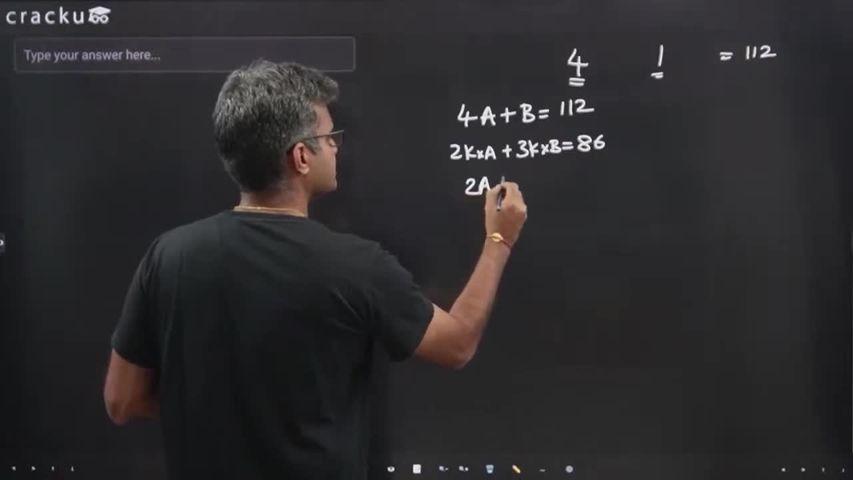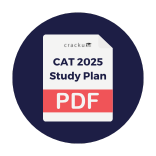Ashok purchased pens and pencils in the ratio 2:3 during his first visit and paid Rs. 86 to the shopkeeper. During his second visit, he purchased pens and pencils in the ratio 4:1 and paid Rs. 112. The cost of a pen as well as a pencil in rupees is a positive integer. If Ashok purchased four pens during his second visit, then the amount he paid in rupees for the pens during the second visit is _____________.
Correct Answer: 100
Solution
Let the cost of pens be A, and the cost of pencils be B.
During his first visit, he purchased pens and pencils in the ratio 2:3, and paid Rs. 86. Let's assume he purchased 2k pens and 3k pencils.
=> $$2kA+3kB=86\rightarrow1$$
During his second visit, he purchased four pens, and since he bought pens and pencils in a 4:1 ratio, he must have also bought one pencil. He paid Rs 112 for this.
=> $$4A+B=112$$ => $$B=112-4A$$
Substitute the value of B in eq. 1 -
=> $$k(2A+3(112-4A))=86$$
=> $$k(2A+336-12A)=86$$
=> $$k(336-10A)=86$$
k is a positive integer, and A is also a positive integer; therefore, (336-10A) must be a factor of 86, and thus (336-10A) will be equal to 1, 2, 43, or 86.
Only when (336-10A) = 86 => A = 25 will give an integer value of A, otherwise we will have a decimal value for A
=> A = 25 and B = 112 - 4A = 12
The amount he paid for pens during his second visit = 4 * 25 = 100 rs.
Video Solution

Click on the Email ☝️ to Watch the Video Solution
Create a FREE account and get:
- Download Maths Shortcuts PDF
- Get 300+ previous papers with solutions PDF
- 500+ Online Tests for Free

